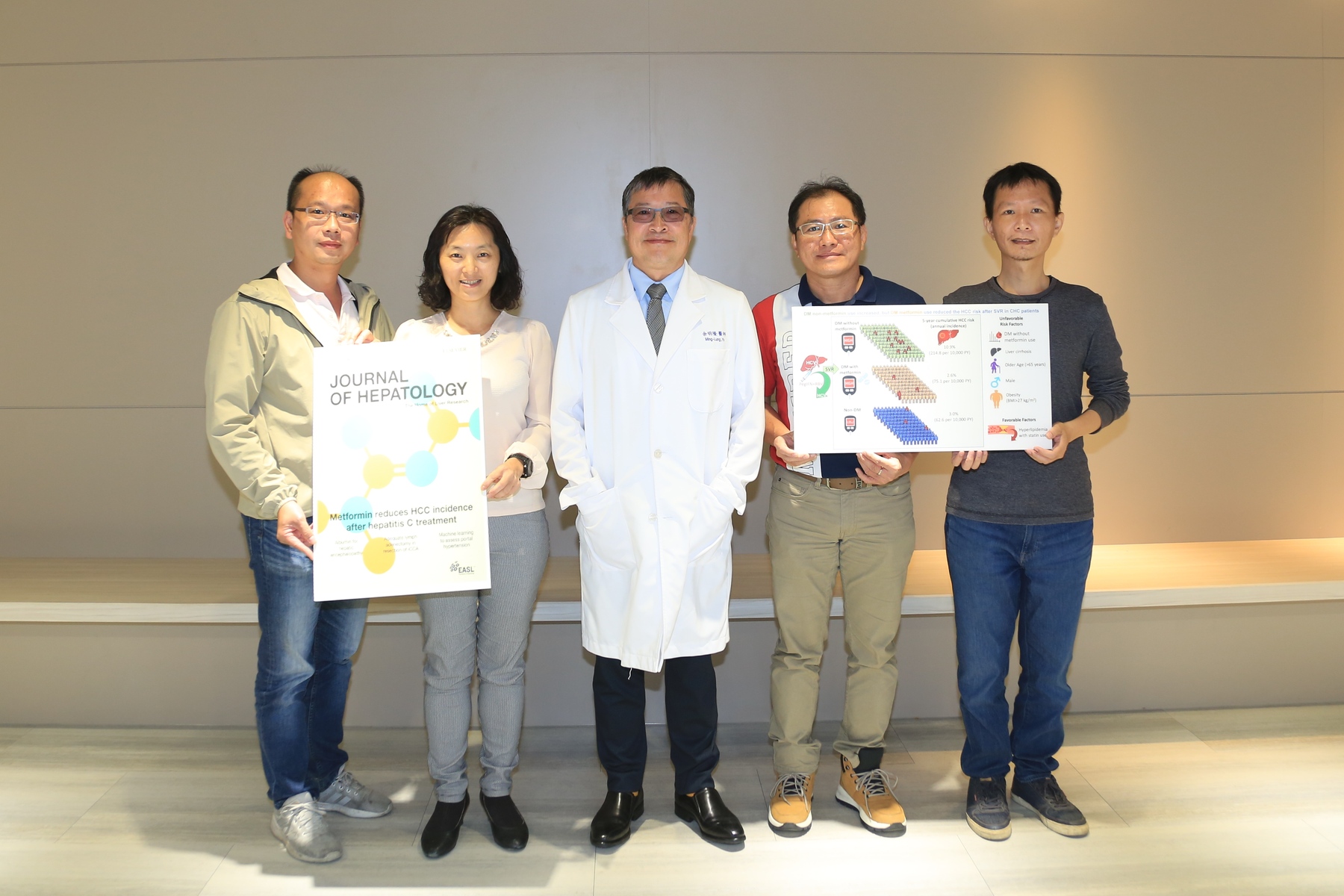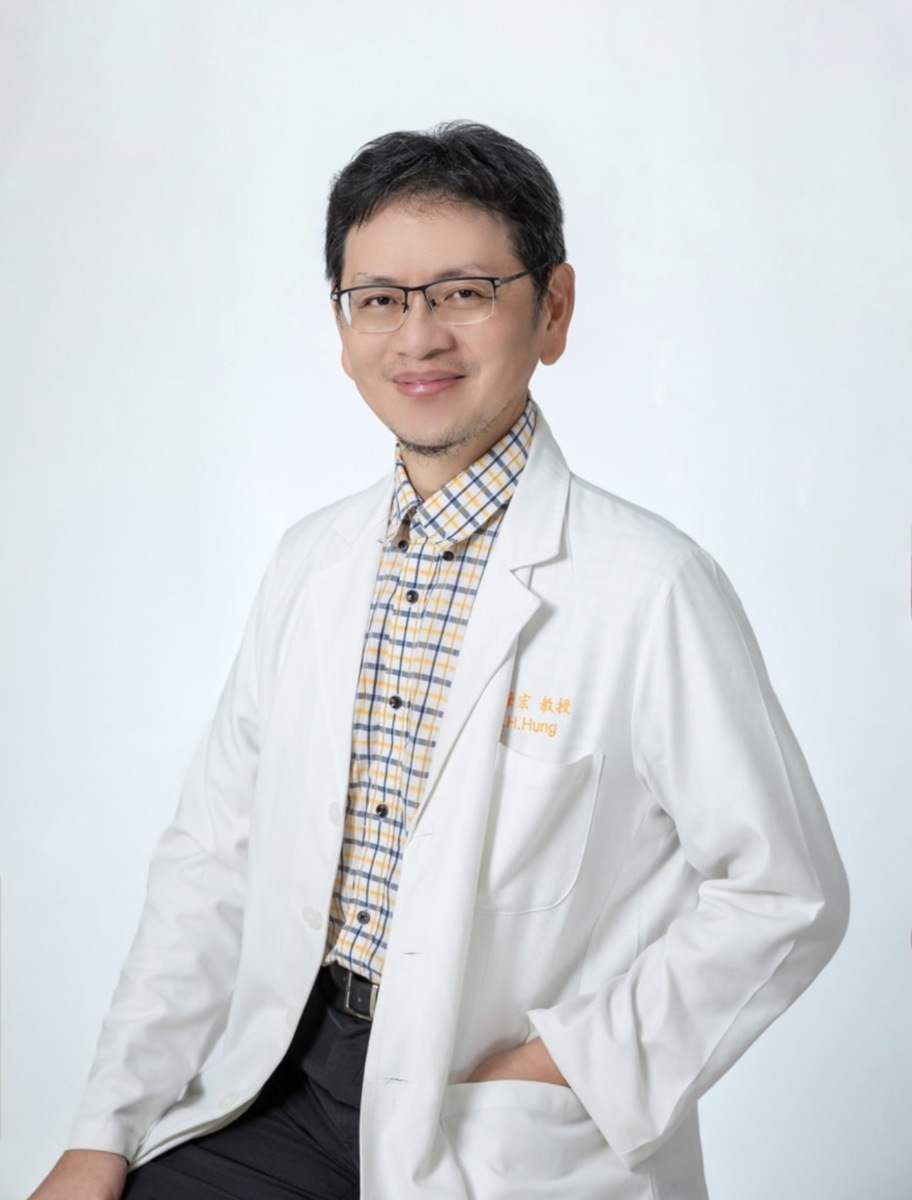The research by NSYSU was published in the world's authoritative leading journal and found that an agent for blood sugar control significantly reduce the incidence risk of liver cancer among patients with diabetes and hepatitis C



2023-04-06
The prevalence of chronic hepatitis C (CHC) in Taiwan is higher than the global average. Patients with diabetes frequently combined with CHC, leading to poor blood sugar control, which can easily damage the liver and kidneys, even increasing the risk of liver cancers. The latest research by Ming-Lung Yu, Senior Vice President of National Sun Yat-Sen University (NSYSU) and Dean of the College of Medicine, found that patients with diabetes mellitus (DM) and CHC, after successful antiviral therapy for CHC, continued to take the blood sugar control agent metformin can significantly reduce the risk of liver cancer. This significant discovery was published in the world's leading authoritative leading journal "Journal of Hepatology" (IF: 30.083), and featured on the cover of that month.
The research was led by Ming-Lung Yu, NSYSU Senior Vice President and Dean of the College of Medicine, and joined hands with teams from 23 tertiary and core regional hospitals across Taiwan, including Kaohsiung Medical University Chung-Ho Memorial Hospital, Chia-Yi Christian Hospital, Tainan Chi Mei Medical Center, Kaohsiung Veterans General Hospital, and Kaohsiung Chang Gung Memorial Hospital, etc. From 2003 to 2015, a large-scale collection of 15,834 CHC patients who were treated with interferon-based therapy at the Departments of Hepatogastroenterology hospitals in Taiwan were enrolled in the clinical database (Taiwanese Chronic Hepatitis C Cohort, T-COACH) and linked to the National Health Insurance Research Database (NHIRD). Among the 7,249 CHC patients who achieved HCV eradication after antiviral therapy and were enrolled in the analysis, 781 (10.8%) also had DM. Of those with DM, 647 (82.8%) were users of metformin, an old drug for lowering blood sugar. In the mean 5-year follow-up study, it was found that a total of 227 CHC patients developed new-onset of liver cancer (hepatocellular carcinoma, HCC). It is worth noting that, in terms of the 5-year cumulative HCC incidence, it was 10.9% in DM patients who did not take metformin, but in DM patients taking metformin was only 2.6%, which was comparable to 3.0% in individuals without diabetes.
Ming-Lung Yu pointed out that the study found that although the antiviral therapy for CHC patients has an excellent curative effect and significantly reduces the incidence of liver cancer in CHC patients, liver cirrhosis is still the most important factor of higher liver cancer risk in CHC patients, followed by DM non-metformin use, older age, male sex, and obesity. This study constructed a simple risk model using the two most crucial risk factors: cirrhosis and DM non-metformin use, to predict liver cancer risk among individuals with CHC after successful antiviral therapy. After background cross-comparison of each group, metformin use was shown to reduce the risk of all liver-related complications in individuals with DM and CHC after successful antiviral therapy.
The research team reminds everyone that it is still unclear whether metformin can reduce the risk of liver cancer among non-DM individuals with CHC after successful antiviral therapy. However, this study proves that metformin can reduce the risk of liver cancer among DM individuals with CHC after successful antiviral therapy. It is strongly recommended that this type of patient continue to use metformin to stabilize blood sugar and reduce the possibility of liver cancer.
"Even if the cure rate of antivirals for CHC is as high as 95% at this stage, 3% to 4% of the cured cases of CHC will still develop liver cancer in the future." Ming-Lung Yu further stated that previous literatures also showed that DM significantly increase the risk of liver cancer among CHC patients, even after antiviral therapy. However, only 60% of DM patients in Taiwan have been screened for CHC. It is estimated that nearly one million people with diabetes in Taiwan do not know whether they have CHC. In recent years, National Sun Yat-sen University, Kaohsiung Medical University Chung-Ho Memorial Hospital, Kaohsiung Veterans General Hospital, Kaohsiung Chang Gung Memorial Hospital, Chia-Yi Christian Hospital, Tainan Chi Mei Medical Center, and other medical teams have started to increase the cure rate of CHC, reduce the incidence of liver cirrhosis and risk of liver cancer. It also appeals to all adults with diabetes should have a CHC screening test as early as possible in their lifetime. In addition, Ming-Lung Yu's research team hopes to find out other ways of control and prevention to reduce the incidence of liver cancer in this group of people with CHC and DM.
Journal article online link:
https://www.sciencedirect.com/science/article/pii/S0168827822031294
